The Museum of Nepali Art (MoNA), Nepal’s first private art museum, was founded by Rajan Sakya and opened in February 2020. Situated in Kathmandu, it houses 500 pieces of contemporary and traditional art by living Nepali artists, around 85% of which is from Sakya’s private collection.
LARRY’S LIST spoke to the founder and art collector Rajan Sakya, who explained the museum’s missions; why he wants to share Nepali art with a greater public; challenges and opportunities of launching the museum during a pandemic; the special programs at MoNA this year; and his visions for the museum in the upcoming years.
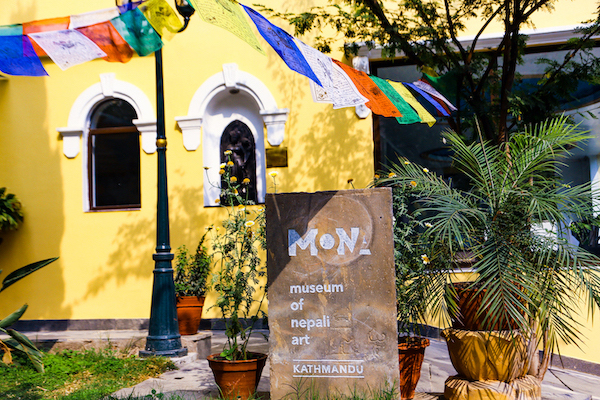
Background
What is your motivation behind opening a museum?
First and foremost, a wish to preserve, honor, and share Nepali art, heritage, and culture. I am grateful for the opportunity to share the remarkable work of my country with the world.
In today’s fast-paced, digital-first environment, it’s vital to take a moment, recalibrate, find balance, and recognize what informs who we are today. Nepal is a destination for seekers, seers, and adventurers. And its art reflects the history that made this country such an exceptional place.
MoNA celebrates the dedicated, talented artists of Nepal — on a global stage for a universal audience. Nepali art has traditionally been exhibited communally; with installations in spiritual spaces: stupas, monasteries, and temples. Recently, it has gained popularity in auction houses and international museums, often via statues and artefacts that were illegally removed from the country. MoNA takes the power of Nepal’s magnificent artistic pieces and traditions back to its homeland.
MoNA primarily dedicates itself to living artists. It presents these artists as a continuum in the legacy of transcendent and exceptional Nepali art. Today’s master Nepali artists are creating work comparable to their predecessors in craftsmanship, and infused with contemporary narratives. Nuanced, sophisticated, and featuring an unparalleled attention to aesthetic details, this art speaks to the past, present, and future. I am humbled to create a platform for the wonders of Nepali artistry.
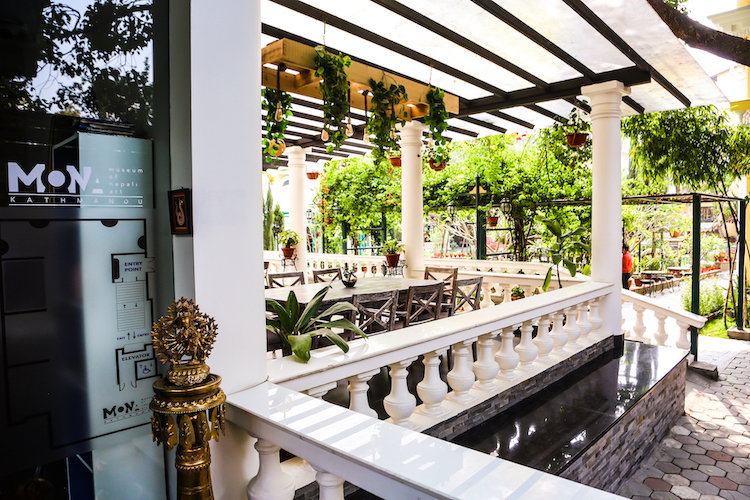
Why is it important for you to share your collection with a wider public?
Nepali art is uniquely profound in knowledge, craftsmanship, and story. When the viewer engages with the pieces, beyond being visually pleasing, the experience is also deeply inspired. Nepali aesthetics and narratives often generate feelings of wonder, peace, and tranquility. Dare I say, Nepali art is an antidote to the frenetic modern world?
Celebrating the singularity of Nepali art will also encourage younger regional artists to be creative, expressive, and empowered. It is the free-thinkers, the out-of-the-box creatives, and the artists that propel society forwards.
The MoNA collection includes 21st-century Nepali masterpieces. In showing these works, Nepalese people can recognize and enjoy the genius of Nepal and its artists.
Why did you choose this location in Kathmandu for opening the museum?
Kathmandu Guest House (KGH) has been referred to as the crossroads of the world. All travelers pass through its gardens at some point in their journey.
It is an iconic national landmark. As one of the first hotels of Nepal, bolstered by KGH brand’s reputation and success in hospitality and corporate industry, MoNA is set up for great success.
MoNA is also located in Thamel, which hosts the highest volume of local and international visitors to Nepal. Kathmandu Guest House is synonymous with Thamel, and is easily accessible.
KGH is also one of the few hotels in the world that has a museum on its premises. Having the museum inside the hotel assures safety, security, and 24-hour protection. As KGH has been a leader in Nepal hospitality industry, MoNA is the leader in Nepali art museums.
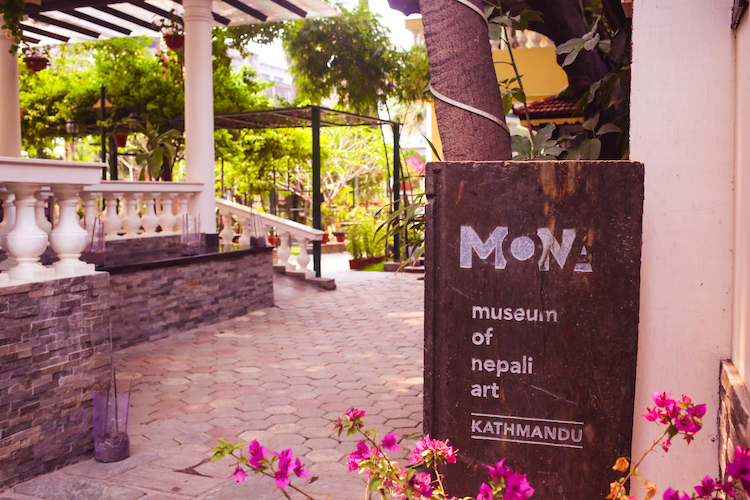
What are the missions of the museum?
MoNA’s mission is to provide a prominent stage to showcase the genius of Nepali art. The platform’s mission is to strengthen Nepali tradition, explore its history, and share knowledge and resources with current and future generations — while introducing our non-comparative artistic forte to the world. It is also a sublime respite from the chaos of the world.
What are the ways to achieve these missions?
Recognize, nourish, and honor creativity with integrity and empathy. Encourage passion. Remain nimble and open as the world evolves. Anchor MoNA in core values, and use our devotion to authentic Nepali culture and art as a beacon.
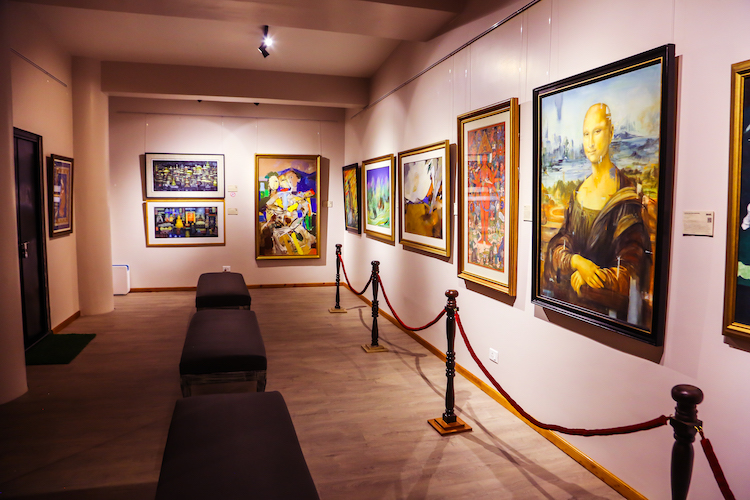
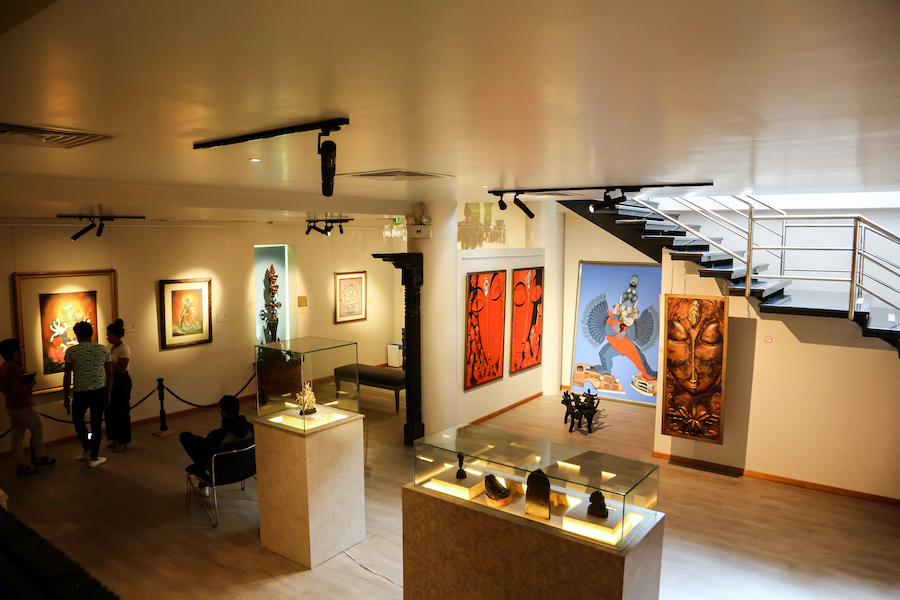
The Collection
How many artworks are currently in the museum collection? And how many of them are being displayed in the museum?
The current collection includes over 500 pieces, with an average of 130 rotating pieces from the permanent collection on display.
What are the selection criteria when you acquire artworks for the museum collection?Authenticity. Originality. Provenance. Craftsmanship. A compelling narrative. Its reflection of Nepali sensibilities. The artist’s background. Ultimately, the ineffable magic of a monumental work of art is the ultimate deciding factor.
I ask myself, “Could this be a national treasure one day?”
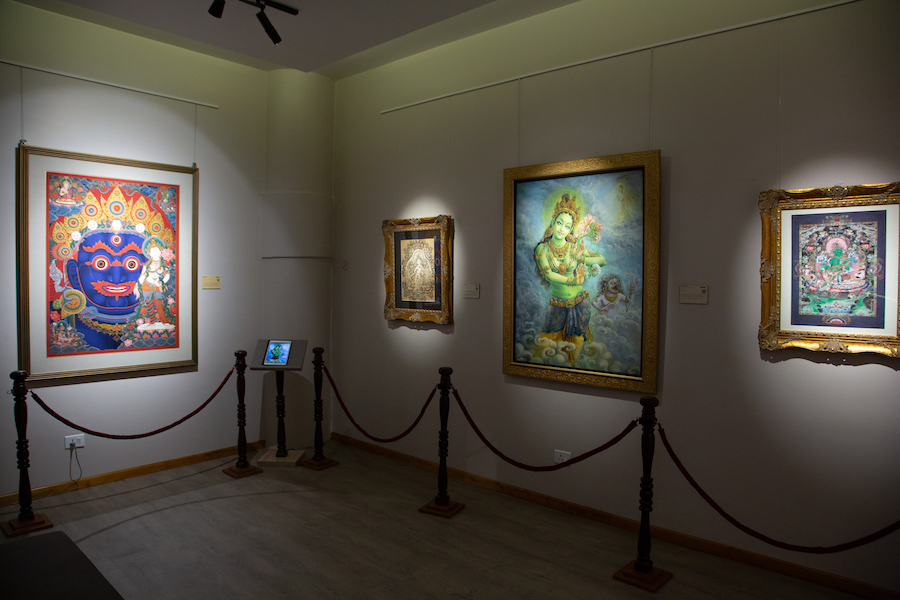
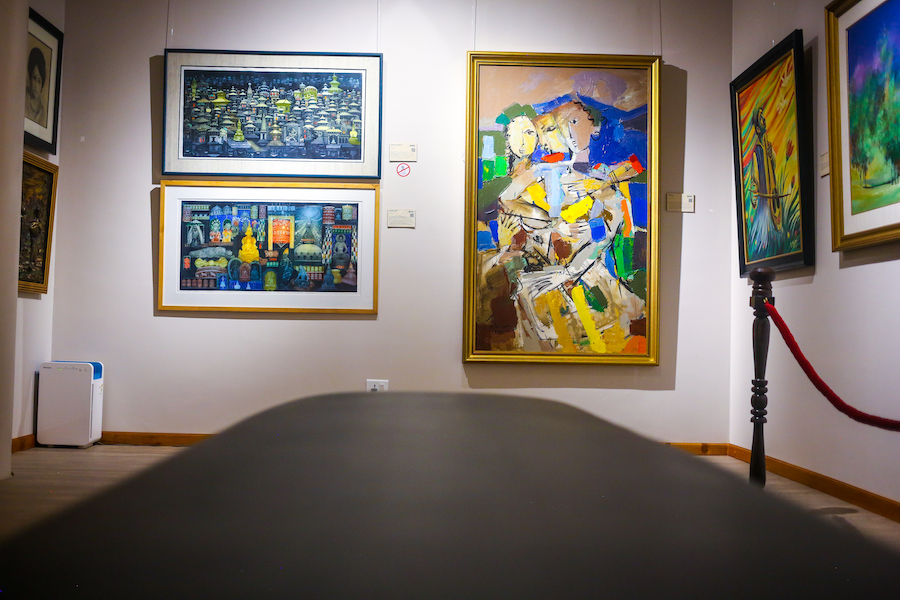
The Programming
How much do you involve in the programming as well as the curating of exhibitions in the museum?
I lead MoNA, guide the internal team, and liaise with art connoisseurs and critics.
You launched the museum during the pandemic. What have been the challenges and opportunities?
Challenges of a global pandemic? COVID is traumatic. Businesses shutter. Uncertainty permeates. Contagion, infection, illness, and death are top of mind. Recovery and the future are unpredictable.
On a tactical level? Sourcing raw materials and securing manpower to build the space is difficult, but it is secondary to caring for our team.
Opportunities? The time to fully focus on the museum project. 18 uninterrupted hours a day for 3 months.
MoNA has been a personal reprieve from the stress of Covid. Art is a sign of hope, a sign of positivity; something that inspires enlightenment and grants joy. MoNA is a destination that creates hope for a glorious future.
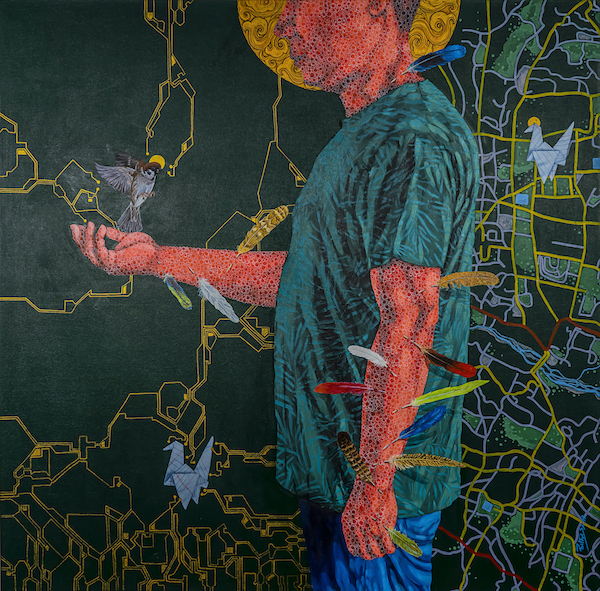
What have been the special programs in 2021?
A special installation of Mr. Ujay Bajracharya, a treasured national artist with an impressive oeuvre of traditional display. In addition, some original drawings from 1930 to 2020 were published online. The museum has been expanded to include an open-air museum. We had the unveiling of works of never-seen-before art as part of the newsletter publication. In addition, we also organized an art festival, MoNA ANNUAL ART FESTIVAL 2021, on October 7, 2021. The artists created live art and part of the proceedings from sale of the same has been donated to the Oncology Ward, Kanti Children’s Hospital.
Any upcoming programs in 2022 that we definitely should not miss out on?
We are planning to do multiple exhibitions of different artists.
How do you interact with local and audience respectively during this period when people cannot travel much?
The age of new media has made it easier for us to communicate with a larger audience. We are very active on social media platforms including Facebook, Instagram, and YouTube. We are engaging the viewers with high-quality photographs of the artworks and their details on our website, which serves as a virtual hub: www.mona.com.np. Another aspect is our newsletter that includes list of ongoing events in the art community and features biography of different artists as well as experts of the sector. We have had limited, socially distanced, and strictly masked gatherings of artists, collectors, gallerists, national museums, connoisseurs, and sundry visitors. We are also frontiers on the CSR programs dedicated to heritage conservation and the artists’ interaction.
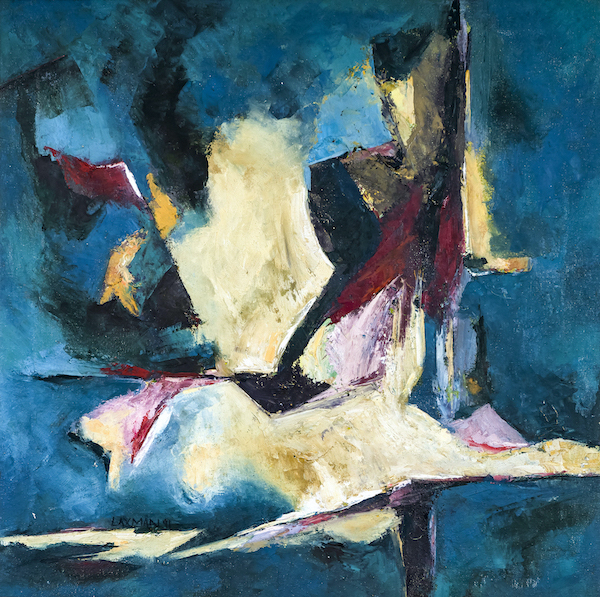
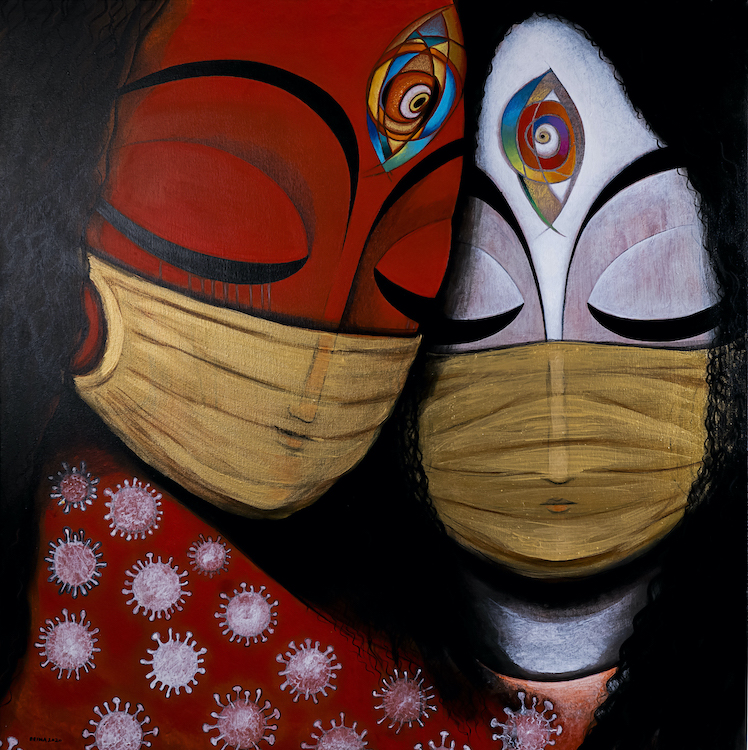
Visions for MoNA
What was your most memorable moment since your private museum has been set up?
The most profound? When I first announced the museum to the artists. The most rewarding so far? The launch. The artist’s emotional expressions — seeing their work exhibited in a new, national museum dedicated to Nepali art — is indescribable.
Ultimately, MoNA resonates with my life’s purpose. It is a passion project, a labor of love, and a gift.
What are on your wish list for 2021 regarding artworks and your museum?
I don’t have a wish list. The best artworks of Nepal are on display at MoNA and future creations will have a relationship with MoNA, because Nepali artists dream of exhibiting their work in a Nepali art museum and trust our shared vision.
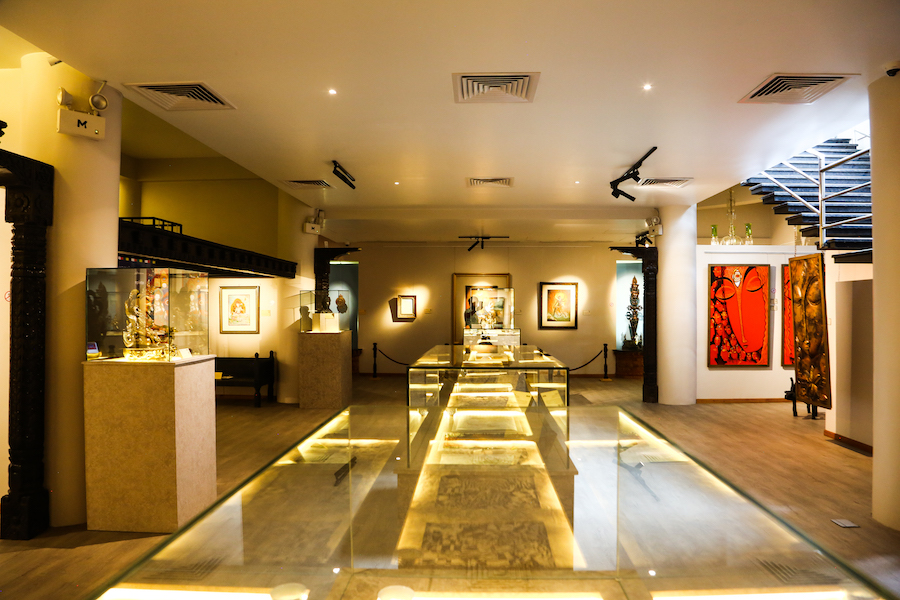

What do you think are the key elements that determine the success of a private museum?
Integrity. Transparency. Curatorial vision.
Respect for the artist, the work, and the experience of the viewer.
Passion. Evolution. A commitment to preservation. Creating a space for current and future generations to find inspiration.
Thoughtful marketing and branding will maximize the museum’s reach on a global scale.
What are your visions for the museum in the next five and ten years respectively?
MoNA will be the hub for Nepali artists, art, galleries, and museums. We would like to open two more museums, have traveling exhibitions in Bangkok, Singapore, Tokyo, Fukuoka, China, London, New York, and other major cultural centers. We will share works from our collection with international exhibitions. As visitors to Nepal sojourn in the country’s bounty of destinations, MoNA may be included in the UNESCO World Heritage program.
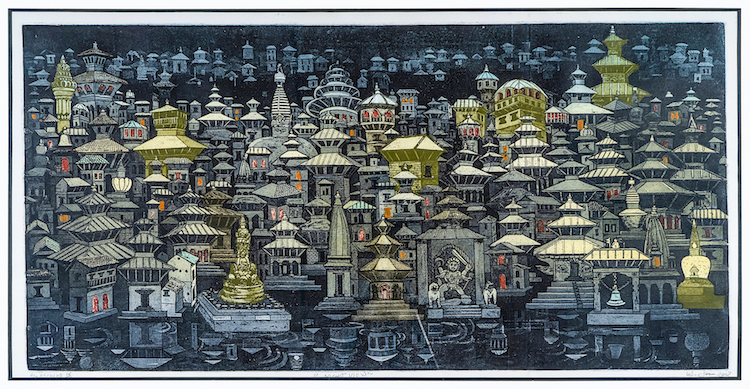
Related: Museum of Nepali Art
By Ricko Leung





